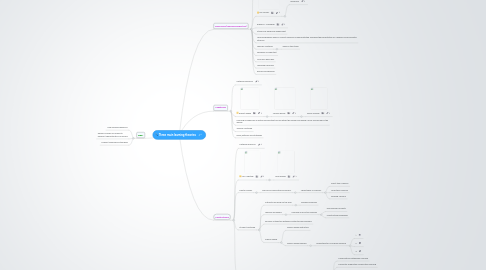
1. Behaviorism(Learning perspective)
1.1. Network Resource
1.2. B.F.Skinner
1.2.1. Black Box
1.3. Edward L. Thorndike
1.4. Stimulus & Response Experiment
1.5. Learning happens when a correct response is demonstrated following the presentation of a specific environmental stimulus
1.6. Teacher-centered
1.6.1. Sage on the Stage
1.7. Feedback is important
1.8. Mind as a Black Box
1.9. Language Learning
1.10. Reinforced Behavior
2. Cognitivism
2.1. Network Resource
2.2. Robert Gagne
2.2.1. Jerome Bruner
2.2.1.1. David Ausubel
2.3. Learning is viewed as an active process that occurs within the learner and which can be influenced by the learner.
2.4. Teacher-centered
2.5. Rules,patterns and strategies
3. Constructivism
3.1. Network Resource
3.2. Lev Vygotsky
3.2.1. John Dewey
3.3. Mental Models
3.3.1. Mind as an information processor
3.3.1.1. Three types of Memory
3.3.1.1.1. Short-term Memory
3.3.1.1.2. Long-term Memory
3.3.1.1.3. Working Memory
3.4. Student-centered
3.4.1. Instructor as guide on the side
3.4.1.1. Building scaffolds
3.4.2. Learners as leaders
3.4.2.1. Learning as an active process
3.4.2.1.1. discovering concepts
3.4.2.1.2. constructing knowleges
3.4.3. Dynamic interaction between instructors and learners
3.4.4. Inquiry-based
3.4.4.1. Inquiry-based instruction
3.4.4.2. Inquiry-based learning
3.4.4.2.1. Characteristics of inquiry-learning
3.5. Social Constructivism
3.5.1. Collaborative Learning
3.5.1.1. Examples of Collaborative Learning
3.5.1.1.1. Collaborative Networked Learning
3.5.1.1.2. Computer-supported collaborative learning
3.5.1.1.3. Learning Management Systems
3.5.1.1.4. Collaborative Learning Development
3.5.1.1.5. Collaborative Learning in Virtual Worlds
3.5.1.1.6. Collaborative learning in thesis circles in higher education
